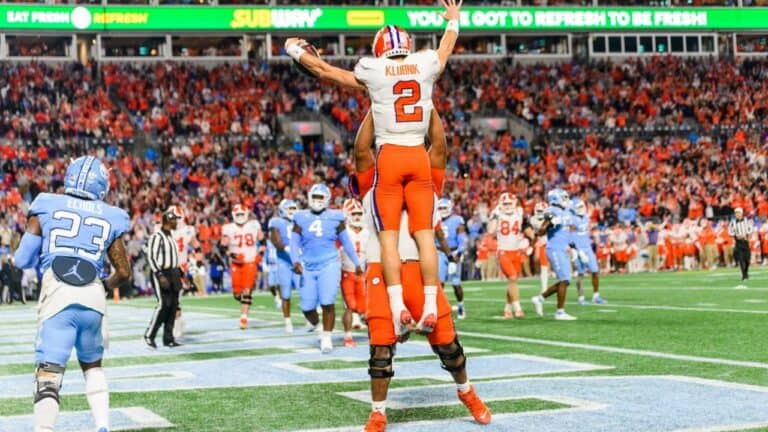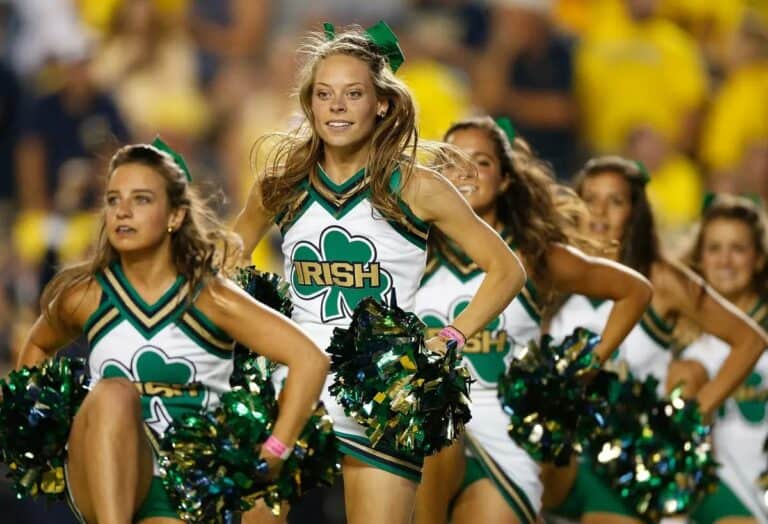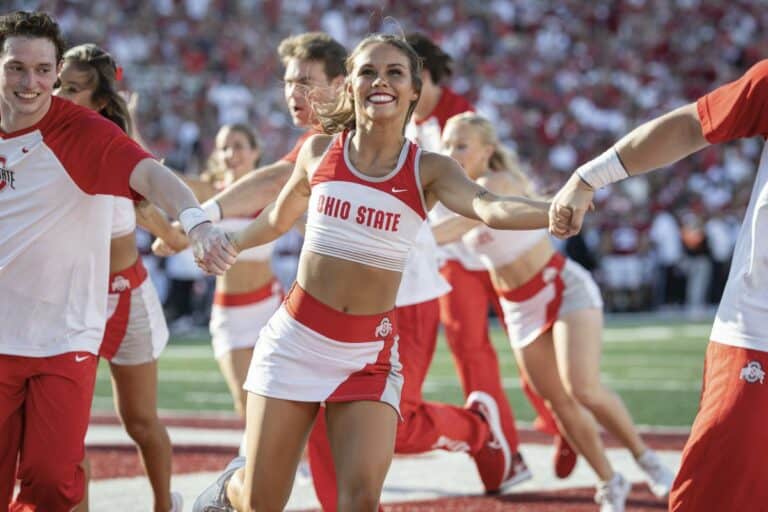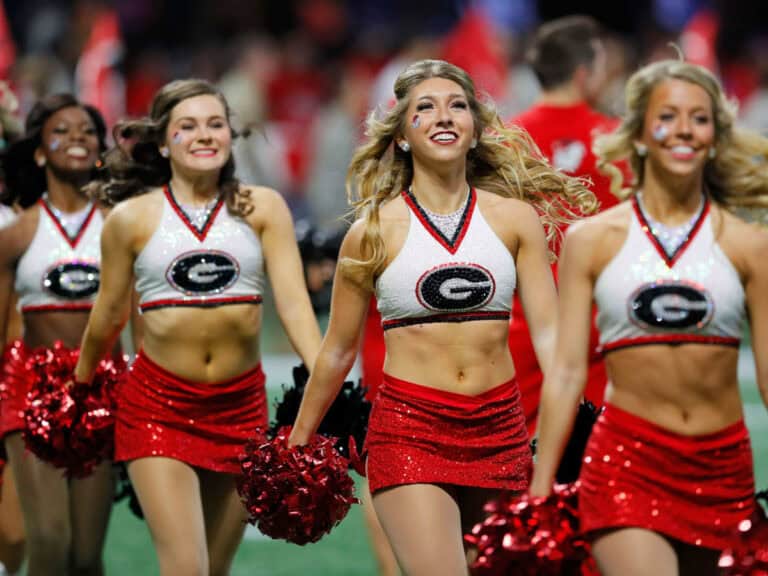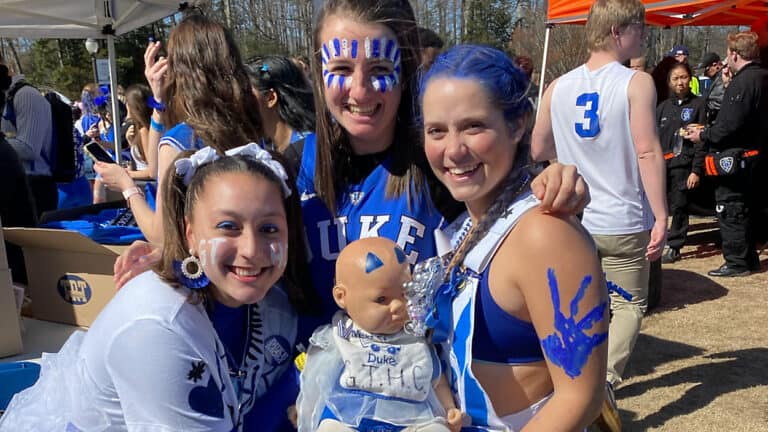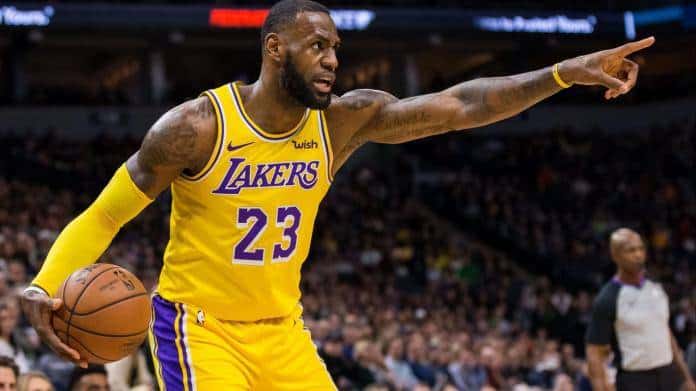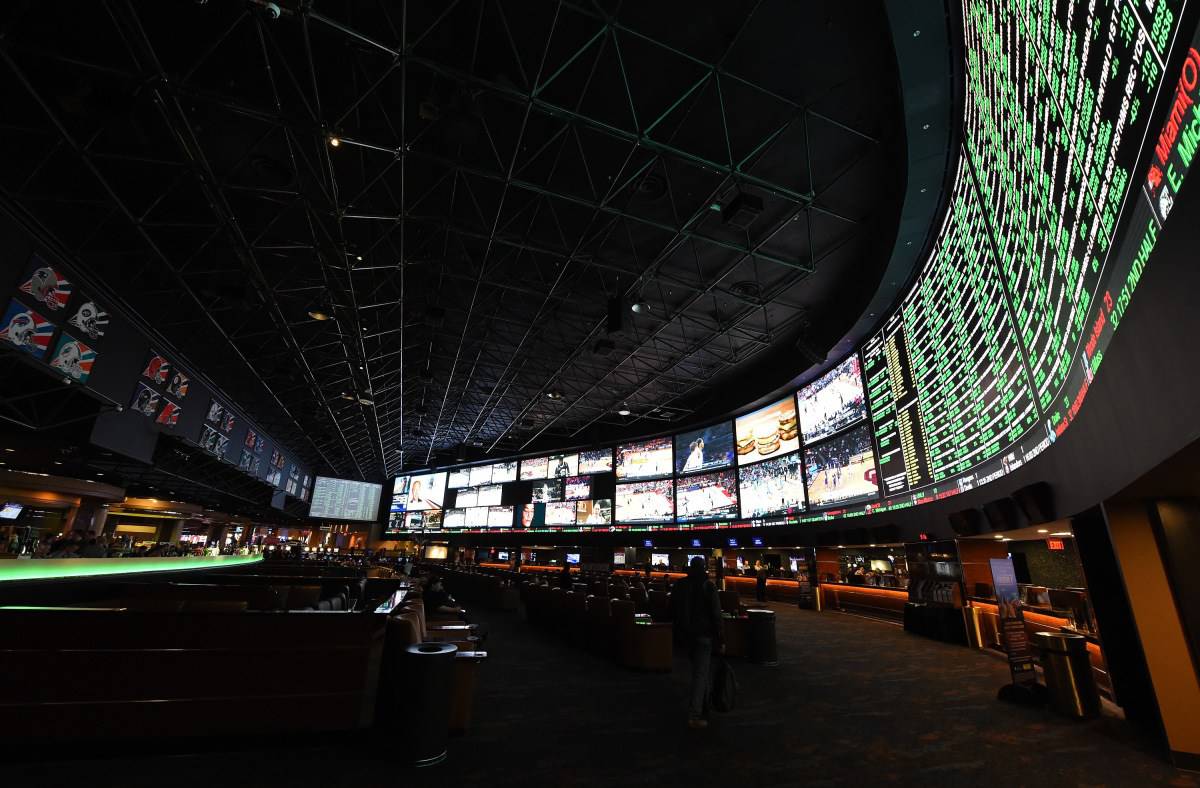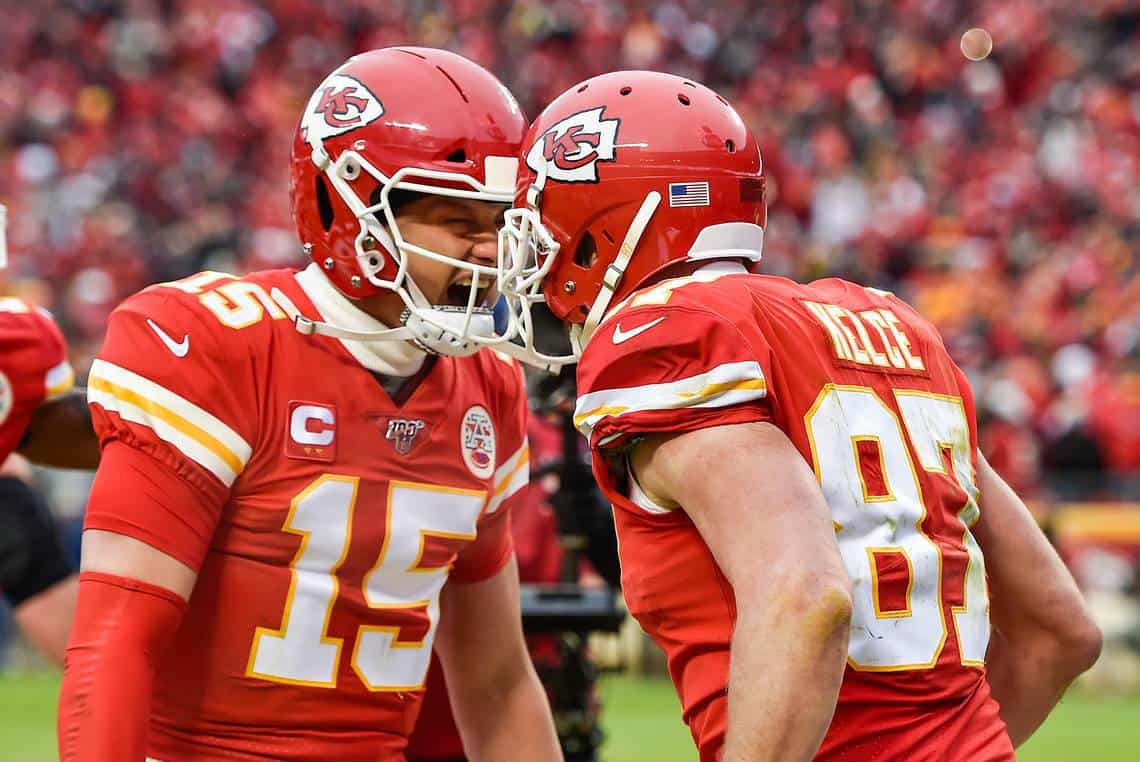NCAAF Betting

 BetOnline
BetOnline
Bonus
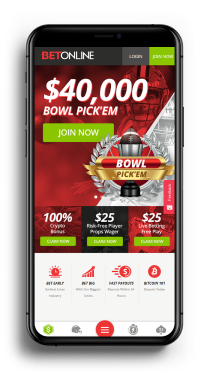
NCAAF Betting News
COLLEGE FOOTBALL BETTING
Introduction To College Football Betting
There is no disputing the fact that in United States the most popular sport among both fans and bettors is football. Internationally, it’s referred to as ‘American Football’ to differentiate it from the sport known as ‘soccer’ in North America but no matter the nomenclature gridiron action captures the majority of the spectator eyeballs and wagering dollars in that part of the world. Professional football—more specifically the National Football League (NFL)--has the lead in terms of both popularity and betting action football played at collegiate level is a strong number two. College football may be solidly behind the NFL game for overall supremacy it has an equally strong advantage over every other sport for second place.
Based on revenue data from Nevada’s sports books, football wagering accounts for more than 45% of all betting action. The state doesn’t break down the specifics of college and pro football revenue, but sports betting experts suggest that the NFL accounts for 55% to 60% of Nevada’s total football revenue. Even at 40% to 45%, that means college football is responsible for nearly 20% of *all* sports betting in the ‘Silver State’. It’s tough to extrapolate data from Nevada to cover every sportsbook serving a North American clientele but there’s a strong probability that football represents an even larger percentage of all sports betting action. Nothing in college football can match the viewership and betting numbers of the NFL Super Bowl, but the annual college football national championship game is growing in significance.
The overall revenue numbers don’t reveal the significance on a ‘micro’ level. At the US biggest college football schools, the sport exceeds the NFL in terms of popularity and attendance numbers. The top college football programs fill up huge stadiums--crowds of 100,000 or more are not uncommon. There are nine stadiums in the United States with a listed capacity of 100,000 or more. Of these, only one is home to a NFL franchise (AT&T Stadium in Dallas). The eight largest American stadiums are college football venues as are 16 of the top 20 and 17 of the top 25. On a state by state basis, the largest stadium in 41 of the 50 states is a venue with a college football team as a primary tenant. Only 9 list the state’s largest stadium as having a NFL team as a primary tenant.
For now, college football is primarily an American phenomenon. There has been plenty of college football played in Canada for years but not even the top teams there have the talent level, attendance or revenue numbers anywhere near that found in the United States. In the rest of the world, American football at the collegiate level is a ‘niche’ sport where it is played at all. By way of comparison, there are likely more students involved in fencing at the collegiate level in the United States than play American football at the collegiate level outside of the US and Canada. As a spectator sport and a betting sport, college football is gaining traction in the rest of the world. Thanks to online streaming, many international fans are watching and betting on college football for the first time. Even so, the level of worldwide popularity is nowhere near that of the NFL which has been working to establish an international presence for several decades.
College football is a much older game than its professional counterpart. Many of the most storied college football programs first began play in the 1800’s. The game quickly found traction at most of the pioneering schools but nothing like the way it is now. Until the mid 20th-century college football was a considered a 'niche' sport even at schools with strong programs. In most cases, its popularity lagged well behind that of college basketball. College football might have started to find greater popularity in the 1950’s but as a television product has always lagged behind the NFL version of the game.
Ironically, college football owes its current runaway popularity to the massive success of the National Football League. As television became an essential part of every American household it helped drive the popularity of NFL football on Sundays. Once the success of the NFL as a television product had been established, TV stations wanted something similar on Saturdays. Football has always been attractive since it can be regionally targeted, can fill hours of programming time, attracts a large audience and (in the early days at least) was relatively inexpensive to produce and secure rights. Back when pinpoint analysis of demographics just didn’t exist, football was also of great benefit to marketers and advertisers. It gave them a fairly easy ‘target audience’ to ‘profile’--for much of the 20th Century football was viewed primarily by a white, male and middle class audience. This gave them a perfect audience for commercials featuring consumer goods like razor blades and beer. On the downside, this belief that football fans only fit a certain ‘profile’ resulted in broadcasters and marketers under-representing female and African American fans. TV stations wanted something similar on Saturday, so they turned to college football. College football became the cornerstone of Saturday TV sports programming, and the marketing around it started to grow.
Once the NFL had established itself as a Sunday (and later Monday Night) staple, the thinking was that college could provide the same benefit on Saturday’s. Saturday’s had always been devoted to children’s programming like cartoons in the mornings and variety programming and movies in prime time leaving Saturday afternoons to be filled with a patchwork of local programming, professional wrestling, boxing, roller derby, etc. College football Saturdays would eventually catch on nationally but it didn’t happen until the early 1970’s.
Today, there are more college football games on television than ever before. National TV games are on every major network, regional sports stations, and dedicated conference stations carry relevant games, and local and regional syndication fill in the rest. More recently, there has been a great deal of consolidation in the regional sports networks and dedicated conference stations with ESPN now owning much of this programming. One way or another, a fan or bettor can find a live stream of virtually every college football game played.
College Football Betting Goes Big Time
Clearly, today’s big time college football industry has the NFL to thank for its genesis. College football may have initially benefited the professional version of the game by familiarizing fans with the rules, but in the TV era college football rode on the NFL’s coat tails in its early days as a television product. Today, the NFL/college football symbiosis is stronger than ever and this conglomeration has made football (aka ‘American football’) the most popular spectator sport in the United States. A 2018 Gallup poll attempted to measure Americans’ favorite spectator sport. 37% indicated that it was ‘American football’. More significantly, football was the only sport that garnered more than 10% of respondents. Baseball was a distant second place with 9% indicating it was their favorite sport. The ‘other’ type of football is also growing in popularity—in third place was soccer with 7% of responses indicating it as a favorite sport. Another irony here—the popularity of college soccer predated the newfound popularity of professional soccer in the United States by several decades.
Based on the Nevada Gaming Control Board data cited earlier it’s obvious that football is the biggest betting sport in the United States but that doesn’t indicate just how dominant it is in the overall North American marketplace. In fact, the dominance of football at the betting window is even more pronounced than among viewers and fans. A 2017 survey of US sports bettors revealed that 78% considered football as their favorite wagering sport. In Nevada, sportsbooks take a larger average bet size on college basketball but more total bets on college football. Data from the Nevada Gaming Control Board indicates that since 1992 bettors have wagered over $30 billion dollars US on NFL and college football. Internationally, college football doesn’t even measure up in terms of betting volume but then again neither does the NFL. NFL football barely cracks the top ten list of ‘most popular betting sports’ internationally coming in at number 9 behind soccer, cricket, tennis, rugby and even handball and volleyball.
The NFL and college football both owe their status as the top gambling sport to the advent of the point spread. Until the pointspread came into common use, both forms of football languished well behind basketball, baseball and horse racing in popularity among bettors. It’s not an overstatement to say that the pointspread changed everything for sports gambling and football was the primary beneficiary. Until the middle of the 20th century there was little interest in sports betting in general and football in particular. Many football games—especially college football games--were mismatches where the winner was a almost a foregone conclusion. These had little, if any, betting interest as players didn’t want to lay the huge odds on the favorite to get a small return nor did they want to back the underdog no matter how much they would get should they win.
The pointspread is the great equalizer that makes any game a viable betting option and thus more entertaining. The recreational sports bettor will tell you that it's the bookmaker's 'prediction' of who will win the game. That is technically incorrect and understanding the intricacies of the pointspread is crucial to a more sophisticated level of sports betting and handicapping. The intention of the pointspread is to split action evenly between both sides of a betting proposition such as a college football game. This keeps the money balanced for the bookmaker and keeps the game much more interesting for the bettor.
There’s not a definitive answer to who came up with the pointspread and when or where it first came into use. Most historical information suggests that it first found common use in Minneapolis during the 1930s Several different bookmakers would claim to be the inventor including Carl Ersine and Darby Hicks but no matter who came up with it the result was that for several decades the ‘Minneapolis Line’ became the most respected in the country and was distributed nationwide. In a bit of revisionist history, Connecticut math teacher Charles K. McNeil is now given credit most frequently as the inventor of the pointspread but it likely predates him by at least a decade.
The Most Common Types Of College Football Bets
Point Spread Bets
The pointspread bet revolutionized betting on both college and professional football and remains the most popular form of betting on both sports. As noted above, the pointspread was invented to better facilitate betting interest on both sides of a game and to serve as way to make games between stronger and weaker teams more competitive from a wagering standpoint.
The easiest way to explain the function of pointspreads in college football is by example. We’ll use an actual game from last season to do this, more specifically the October 21, 2017 game between the Florida State University and the University of Louisville. The FSU Seminoles were the home team and closed as a 7 point favorite (sports betting shorthand designates the favorite with a ‘minus’ sign, so the Seminoles were -7 in that game). The visiting Louisville Cardinals, conversely, were 7 point underdogs (shown with a ‘plus’ sign, making the Cardinals +7).
In a pointspread bet, a favorite must win the game by a larger margin than indicated by the pointspread. So in the example above, if you backed the Seminoles to win the game they’d have to do so by 8 or more points for you to cash your bet. If the margin lands right on the pointspread, it’s a ‘push’ and all wagers are refunded. Thus if Florida State had won by 7 points the game would have been a ‘push’ and all bettors would have gone home with their original stake in their pockets. One benefit of using ½ points in bookmaking is the elimination of a possibility that the game might ‘push’.
If you wager on the underdog, they must either win the game outright OR lose by less than the pointspread. In the example above, a bet on the Cardinals would have been victorious if they won the game outright or lost by 6 points or less. As it happened, Louisville dominated the contest and held off a furious fourth quarter Florida State rally to prevail 31-28 making bettors who took the Cardinals plus the points winners.
Over/Under or Totals Bets
The point spread bet is the overwhelmingly most popular type of college football bet but the ‘Over/Under’ or ‘Totals’ bet is a solid second. The bettor bets that combined score of the two teams will be more or less than a set number (known as the ‘total’ on the game). Once again, we’ll use the October 21, 2017 game between the Florida State University and the University of Louisville as an example. The total on the game was 58 and would be shown in this format at a sportsbook:
LOUISVILLE CARDINALS 58
FLORIDA STATE SEMINOLES -7
There is a general convention for North American sports books that lists the home team at the bottom. The -7 by the Florida State Seminoles’ name is the pointspread and the 58 by the Raiders’ name is the total. Note that there are a variety of different conventions for game and bet formats throughout the world but this example is based on the predominant form used by North American facing books.
Since the total is 58 the bettor will try to determine if the combined final score will be 59 or higher going ‘Over’ the total or 57 or lower going ‘Under’ the total. As is the case with the pointspread, if the final score of the game is 58 and lands right on the total, it’s a ‘push’ and all wagers are refunded.
Recreational players are becoming more comfortable with totals wagers but they have been popular among ‘sharp’ players for decades. To find winning positions, experienced handicappers evaluate a wide range of factors including style of play, field surface, injuries and even the weather. For many years, only high profile or televised college football games would have a total set on them. Today, some books still limit the number of games on which they post totals but the majority have totals on every college football game on the board.
Moneyline Bets
Moneyline bets on college football are easy to find but they’re not anywhere near as popular as in the NFL. This could be due to the disparity in talent from top to bottom in college football—there’s more parity in the NFL which in theory lends itself more to moneyline bets. They’re the most fundamental and basic type of sports wager. The player bets on which team will win the game. Point spreads are not involved so if ‘his’ team wins, he cashes his bet. In most instances, moneyline ties are graded a ‘push’ and all stakes returned.
Typically, moneyline bets involve laying or taking odds on the favorite and underdog respectively. How these odds are conveyed will be different depending on which part of the world you’re in. In Europe, decimal or fractional odds are most common but in North American facing sportsbooks moneylines are used most frequently. We’ll return to our ‘sample’ game between Florida State and Louisville:
LOUISVILLE CARDINALS +150
FLORIDA STATE SEMINOLES -170
Moneyline odds can be confusing to beginners—and foreign bettors used to fractional or decimal odds find them maddening—but once you get your head around them they’re easy to understand. In this example, a player that wants to bet the favored Florida State Seminoles must lay -170 to win 100 or in monetary terms $170 to win $100. If the Seminoles are victorious, he’ll receive his original $170 stake back along with his $100 profit for a total of $270. If he’d rather back the Louisville Cardinals the bettor will lay 100 to win 150, or $100 to win $150. If Louisville wins the bettor is returned his $100 stake back plus $150 in profit for a total of $250.
Other Types Of College Football Bets
Parlays
Most sportsbooks offer parlay bets on college football though they’re not nearly as popular as in the NFL. Here’s a sample parlay payout table.
# of Teams Payout Odds
- 2 -> 13 to 5
- 3 -> 6 to 1
- 4 -> 10 to 1
- 5 -> 20 to 1
- 6 -> 40 to 1
- 7 -> 75 to 1
- 8 -> 100 to 1
- 9 -> 150 to 1
- 10 -> 300 to 1
- 11 -> 450 to 1
- 12 -> 600 to 1
- 13 -> 750 to 1
- 14 -> 900 to 1
- 15 -> 1500 to 1
Players can play parlays in one sport, multiple sports or in some cases the same game. Let’s go back to the ‘sample’ game we used above which took place in Week 8 of the 2017 college football season for an example of a three team parlay:
Louisville +3.5 over Florida State
Temple +7.5 over Army
Alabama -36.5 over Tennessee
$100 to win $600
In this example all three legs of this three team college football parlay were winners meaning that the player would receive a total of $700 which includes his original stake of $100 and $600 of profit. In the event that any leg of a parlay is a ‘push’ the usual practice is to pay out at the next lowest level. For example, if two legs of a three team parlay win and one leg ends in a ‘push’ it will be paid as a two team parlay (13 to 5). A two team parlay with a ‘push’ is usually considered a ‘straight bet’ for payment purposes. There are some exceptions—many Nevada sportsbooks offer ‘Ties Lose’ parlay cards where a ‘push’ in any game is treated the same as a loss. ‘Ties lose’ wagers typically pay higher odds than traditional parlay wagers. Some sportsbooks will put limitations on parlays such as not allowing certain sports to be included or not allowing side and total parlays on the same game (‘correlated parlays’).
Live Betting
Live betting—also known as ‘in game’ or ‘in running’ betting—has been ubiquitous in European soccer for years but is now becoming common for NFL and college football games as well as games in other sports. As the name suggests, live betting is simply betting that takes place after the game has started. It’s not so much a type of bet itself as it is a circumstantial modifier to every other bet type. The specific bets available to a better in a live betting situation vary widely from one sportsbook to another determined not only by their individual bookmaking philosophy but by the technological power of their wagering platform. Most every sportsbook will offer at minimum updated side and total prices throughout the game along with quarter and half sides and totals. The best books with the most state of the art live wagering platform will offer dozens—even hundreds—of different bets available to players on high profile football games.
